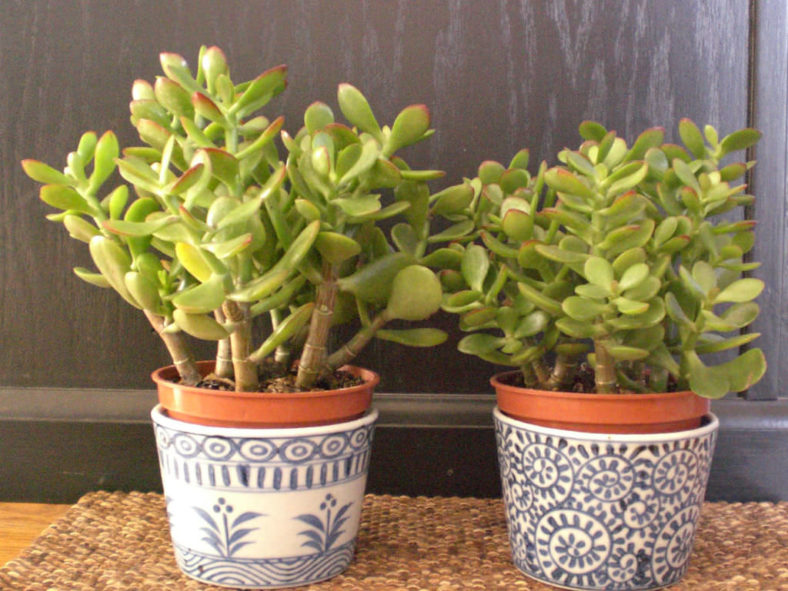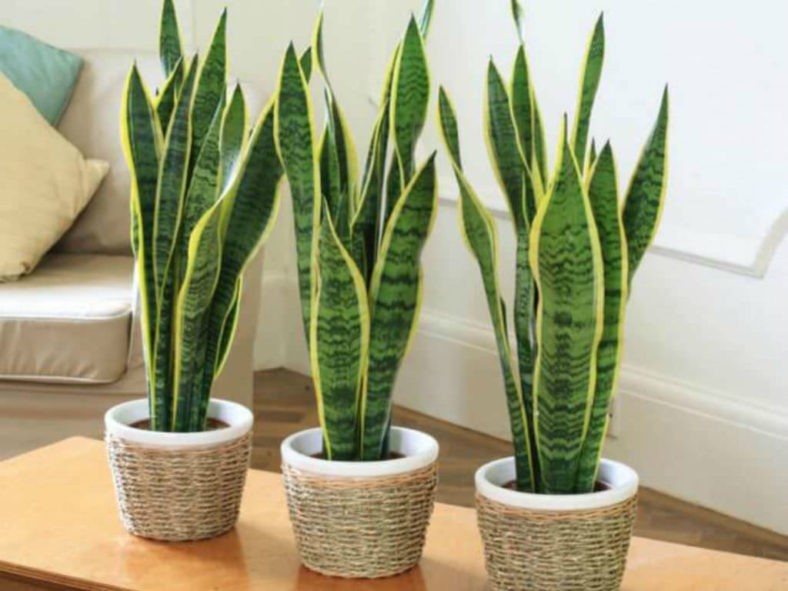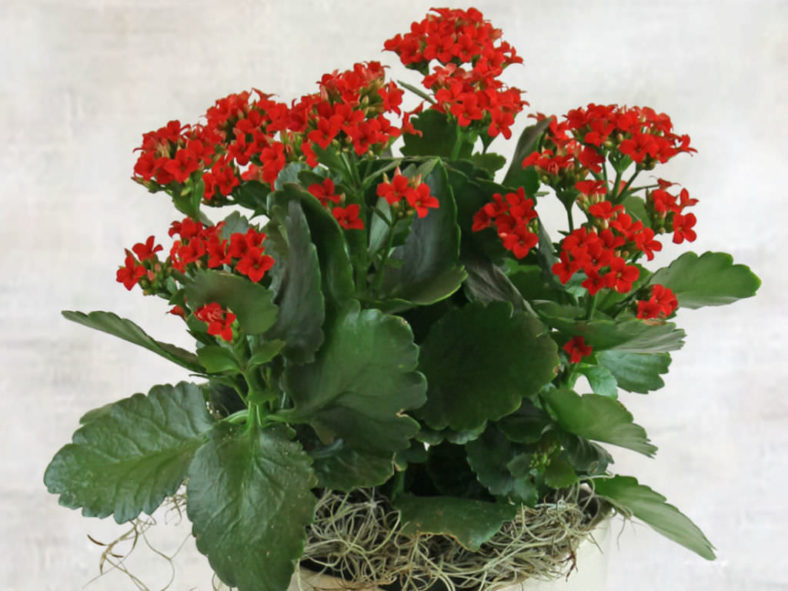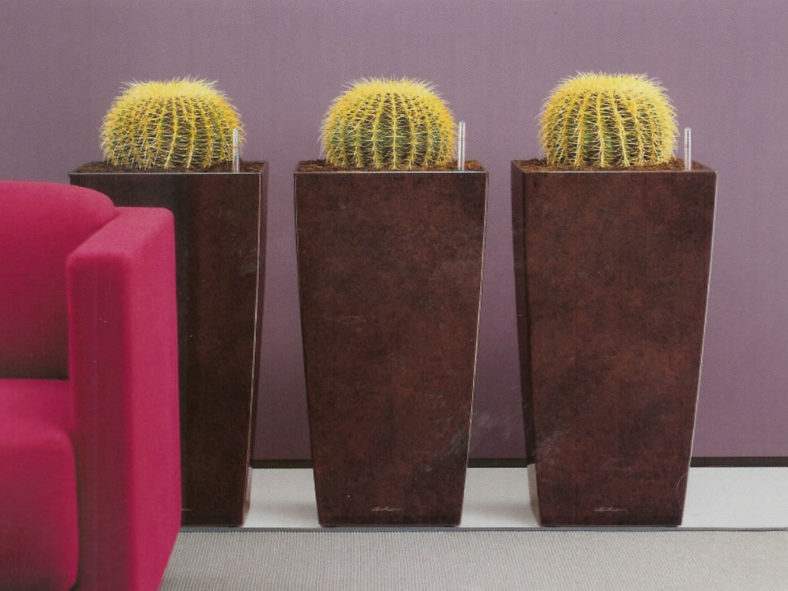They may not have lush tropical foliage or fast growth, but cacti and other succulents have other advantages as houseplants. Their water-storing capability allows you to miss watering them a day or two without having a dead plant. They thrive in the low humidity and warmer temperatures of most homes. Slower growth means they have a smaller footprint and require less frequent maintenance. Many of the most common succulents also share an ability to grow well under the lower light conditions often found indoors. Succulents other than cacti do better than cacti in bright indirect light without much direct sun.
Jade Plant
Crassula ovata, commonly known as Jade Plant, can exist indoors for decades and reach a considerable size. Its glossy green leaves and sturdy, succulent trunk and branches provide enough interest without flowers. The older Jade Plant does flower, but the conditions have to be just right. You can grow it in only bright, indirect light, but its growth habit is more compact, and the leaves develop reddish edges in winter if you grow it in an area with morning sun. The Jade Plant does not require frequent repotting; it grows best when slightly potbound. It needs well-draining soil, and using a soilless mix specifically designed for cacti and succulents is ideal. Water the plant when the top 2 inches (5 cm) of the soil is dry. Jade Plant grows outdoors in USDA Plant Hardiness Zones 10 through 11.

Snake Plant
Sansevierias, commonly known as Snake Plants, are ideal for growing in low-light situations. They have been houseplant favorites since Victorian times. Members of the Agave Family, Sansevierias have leathery, mottled, or striped, sword-shaped leaves in shades of gray, green, yellow, and white. Size ranges from dwarf varieties to plants with long, erect leaves. Sansevieria trifasciata 'Hahnii', commonly known as Bird's Nest, is 12 to 18 inches (30 to 45 cm) tall and 6 to 12 inches (15 to 30 cm) wide. Its variegated leaves are arranged in a cupped basal rosette that resembles a nest. Erect leaves of taller cultivars can reach 5 feet (1.5 m) and have different color patterns. Sansevieria trifasciata 'Laurentii', commonly known as Striped Snake Plant, is probably the most widely grown. In USDA Plant Hardiness Zones 10 and 11, Sansevierias are suitable for outdoor shade garden plants.

Flaming Katy
Valued for its abundant, long-lasting, bright flowers, Kalanchoe blossfeldiana, commonly known as Flaming Katy, has fleshy, green leaves with scalloped margins. Each stem is topped with clusters of single or double flowers. Flower colors are red, pink, rose, orange, yellow, and cream. Florists produce blooming plants year-round, but Flaming Katy blooms typically in winter as a houseplant. Native to Madagascar, Flaming Katy is hardy in USDA Plant Hardiness Zones 10 through 12. Use it as a patio plant during warm seasons, but return it indoors if temperatures approach the 30s. Give Flaming Katy a sunny spot for optimal flower and leaf color, but it will also tolerate bright, indirect light.

Golden Barrel
Although Echinocactus grusonii, commonly known as Golden Barrel, eventually becomes large, it remains a widely grown houseplant. Symmetrical clusters of golden spines and a compact spherical body give it ornamental value, even if it does not bloom for the first time until it is about 15 years old. Native to central Mexico, the Golden Barrel can be grown outdoors in USDA Plant Hardiness Zones 8 through 11. This plant requires direct sunlight to maintain its rounded growth habit and brightly colored spines. Water your cactus whenever the top inch (2.5 cm) of potting soil is dry, which will be less frequent in winter, and use a well-draining cactus soil mix. Repot when the plant touches the pot rim and give it just the next biggest pot. Mix controlled-release fertilizer into the soil when you repot or give the plant half-strength balanced fertilizer in spring and mid-summer.

Source: sfgate.com
Links
- Succupedia: Browse succulents by Scientific Name, Common Name, Genus, Family, USDA Hardiness Zone, Origin, or cacti by Genus